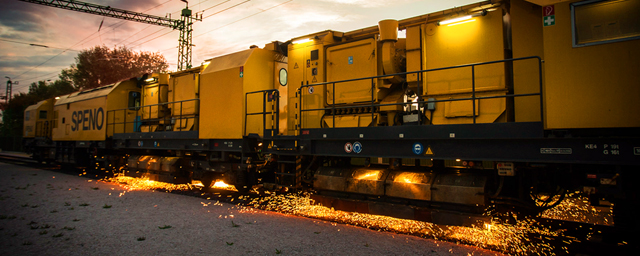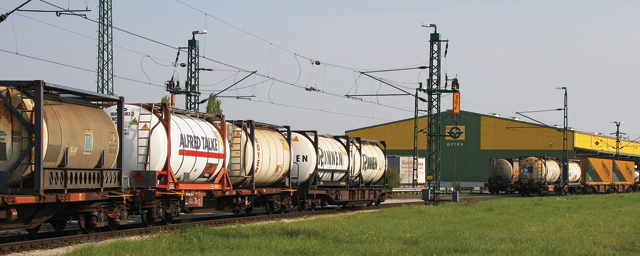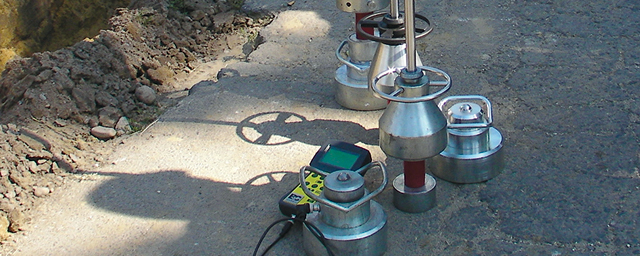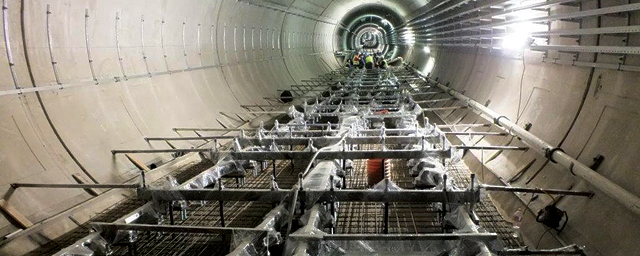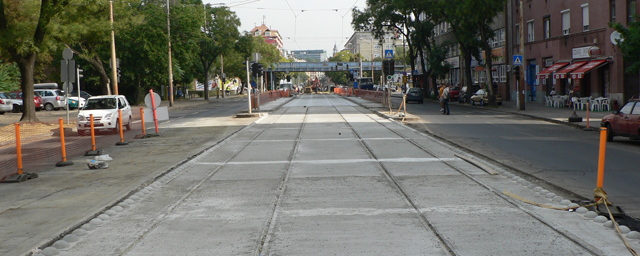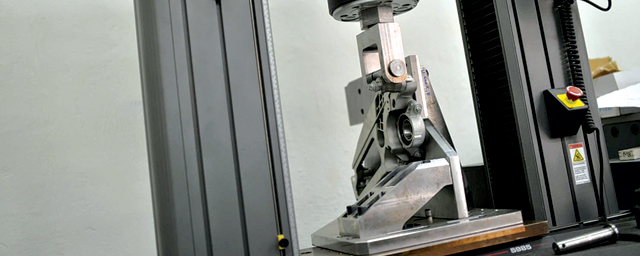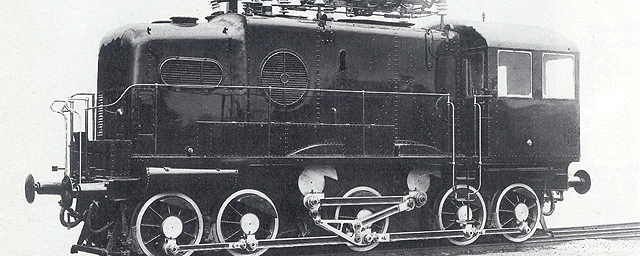The quality of railway wooden sleepers
Here in Hungary, wooden sleepers are made of two wood types: Beech (Fagus sylvatica) is mainly used for open tracks, while European oak (Quercus petraea, Quercus robur) for track switch sleepers. The two types of wood behave completely differently in sleeper production, so they show significant differences in their quality. Among the many wood deficiencies, which determine the quality of the wooden sleeper, the most common problem is false heartwood in the case of beech. The significance of this problem lies in the fact that the saturation of both the heartwood and false heartwood is practically not possible. Unfortunately, experience shows that false heartwood oak are getting into sleeper production in ever larger quantities. This is due to the growth circumstances of beech, that is to say most of the good quality beech is reserved for the more profitable side of the industry, for example the furniture production. There is usually less trouble with the quality of oak in sleeper manufacturing, as oak provides a much better raw material for sleeper production than beech.
The reason for this is, on one hand, the difference between the wood tissue structures (anatomical structures), and on the other hand, that water loss (drying), size change, deformation and formation of cracks in the two kinds of timber manifest themselves in different ways. One of the most important differences is that the fibre saturation point of beech tissue is 36%. Consequently, the sudden loss of water in beech sleepers results in large and long cracks (Figure 1).
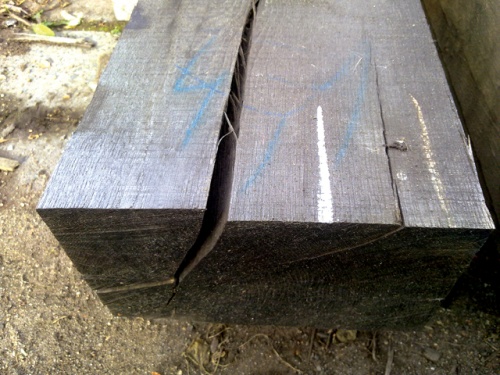 Figure 1. Beech sleeper
Figure 1. Beech sleeperConversely, the fibre saturation point of oak tissue is well below this, approx. 24-25%, which causes smooth and fine cracking in drying oak sleepers (Figure 2).
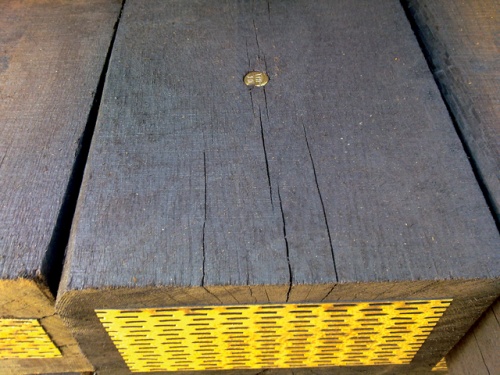 Figure 2. Oak bearer
Figure 2. Oak bearerThe differences are strikingly visible. Our experience with receiving and classifying sleepers shows that the proportion of long and deep cracks formed in beech sleepers can be largely reduced if the raw beech sleepers are already stored, stacked in late autumn or in winter to develop a slow and steady drying process, so that the following spring warmth and summer heat will cause neither such intense water loss, nor rough crack formation. Autumn and winter storage is particularly justified by the recently observed climate change that leads to huge extremes of temperature trends already in spring. High temperature periods, when the temperature reaches or even exceeds 35 °C, are more and more frequent in spring. Spring storage of fresh oak sleepers will result in large cracks and deformations, because of such severe weather anomalies.
Besides, the quality of railway sleepers is also determined by the type and quality of saturation. The saturation process differs in the case of beech and oak, since beech wood is not durable; its durability is classified as Class 5, which represents the non-durable category. (Durability for wood materials is categorized 1-5.) In contrast, European oak can be classified as Class 2 (durable), which makes oak suitable for outdoor use without protective treatment. This is not the case with beech. The preservation of wooden railway sleepers is traditionally solved by a coal-tar based preservative. In Hungary, only the WEI C or WEI C GX-Plus types of oil saturated sleepers, considered up-to-date, can be used, the actual benzo(a)pyre content of which falls below 5-15 ppm. The quality of saturation, as well as of the wooden sleeper is regularly monitored. We not only check the depth of preservative penetration, but also the type and purity of the saturating liquid by random sampling. We do this in order to prevent the repetition of an incident which occurred some years ago when the sleeper shipment received in the country was not saturated with oil of proper quality. To overcome this, we have reorganized our testing laboratory. We continue our testing and classification processes as accredited activities under a new name: the Central University of West Hungary Testing Laboratory (NYME KVL). The chemical division of the Testing Laboratory has developed its own method based on the GC-MS technique for subsequent creosote-treated wood testing, qualitative and quantitative determination of creosote, as well as for the determination of creosote benz(a)pyrene contents. The development of an own measurement method is justified by the fact that current standards (BS EN 1014-1, EN 1014-2, EN 1014-3, EN 1014-4) are not adequate for giving satisfactory replies to the information sought. Thus, partly using the methods described in the standards above, we apply a modern procedure based on gas chromatography separation and mass spectrometry analysis.
The application of cancer causing creosote-treated wood is still allowed, in accordance with conditions set by the EU. Using creosote for sleeper protection is authorized in the EU member countries until April 31, 2018. Further authorization may be determined by the research done by then. The question is how viable the sleeper protection alternatives will be in replacing creosote treatment. In terms of the environmental impact, the best solution would be the application of a wood type which would meet the durability requirements in its natural untreated state. Among the European tree species, only the black locust (Robinia pseudoacacia) could be an option, but, unfortunately, it cannot be grown on an industrial scale for the necessary cross-cuts. The possibility of chunking would probably be worth checking out at least at the model level, but the time resistance of gluing may pose a special problem. Effectively, wood treatment with some other substance or amendment could be possible. The possibility of using inorganic salts is regularly raised, but in this case, the inadequate stability of the effective substances, as well as leachability pose the main obstacles. Moreover, due to the application in low concentration, such large quantities should be introduced into the sleepers made of a less saturable type of wood, which is almost impossible. After this, huge amounts of water should be dried out, which raises further technological problems.
Several studies have reported the successful use of natural materials as protective agents, but they are only used for short-term (a few years) protection with regular repetition of treatment, therefore their use in railways is excluded. Regular treatment is indispensable due to the low stability and volatility of these agents. Another research direction aims at making wood hydrophobic, by introducing some other substance (e.g. acetylation), but in this case, solving the long-term weather resistance is the biggest problem. For other outdoor applications, the so-called ‘thermo wood’ proved suitable, however, the elastic properties (in particular, the dynamic indicators) deteriorate to such an extent that their use as sleepers is excluded. Overall, it is determinable that replacement of creosote used in this area in the present and in the future is likely to be difficult.
At the moment, it seems illusory to expect a biological material used in these circumstances that poses no burden on the environment and at the same time protects the product against biological pests for several decades. The fact remains that many of today’s highly refined oils represent no greater burden than other biocides used in other domains.•





